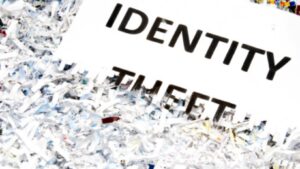
Information can be stolen from paper documents through various methods. Here are some common techniques used by attackers:
Physical Theft:
Unauthorized individuals gain access to paper documents by physically stealing them. This can happen through theft, burglary, or even insiders who have access to the documents. Papers are left in the open like on desks tops, unlocked file cabinets, and file rooms.
Dumpster Diving:
Attackers search through trash or recycling bins to find discarded documents containing sensitive information. This method is often used to target businesses or organizations that dispose of paper documents without proper shredding or disposal procedures.
Mail Interception:
Intercepting mail is another method used to steal information from paper documents. Attackers may target mailboxes, postal drop boxes, or post offices to obtain documents such as bank statements, credit card bills, or other confidential correspondence.
Social Engineering:
Attackers may use social engineering techniques to manipulate individuals into giving up confidential information. For example, they may pose as a legitimate authority or organization and request copies of important documents, tricking individuals into providing the information willingly.
Document Forgery:
Attackers may forge or alter paper documents to gain access to sensitive information. This can involve creating counterfeit documents, modifying existing documents, or changing the contents of documents to misrepresent information.
Skimming:
Skimming involves using devices to copy or capture information from physical documents. For example, attackers may use small cameras or scanners to capture images or data from documents such as passports, IDs, or credit cards.
To protect sensitive information on paper documents, it is essential to take precautions such as:
1. Secure storage: Keep sensitive documents locked in secure cabinets, controlled aces file rooms, or safes when not in use, limiting access to authorized personnel only.
2. Shredding: Dispose of paper documents containing sensitive information by shredding them using cross-cut or confetti-cut shredders to make it almost impossible for thieves to reconstruct the information so they can use it.
3. Proper disposal: Ensure that shredded documents are securely disposed of, such as through a reputable shredding service or by mixing the shredded pieces with other waste.
4. Mail security: If sending sensitive documents through the mail, always bring them to the post office service window or give them directly to your mail carrier. Never put them in your mailbox or a postal drop box where they can be stolen. You mail also consider using secure mailing options, such as registered mail or certified mail, to reduce the risk of interception.
5. Awareness and training: Educate employees or individuals about the importance of protecting sensitive information and how to identify and respond to social engineering attempts. The training should be done on an annual basis at a minimum.
Although documents being stolen is a constant risk, it can be mitigated to a large extent by consistently following this recommendation.
It’s worth noting that digital storage and transmission of information also pose their own security risks, and organizations should adopt a comprehensive approach to protect both physical and digital information
By
James Dowse CSDS


